קהילה
שטוטגארט
יוצר הקהילה

dan eldar
שלח מסר ליוצר הדף

רות הרמן

Ruth Hermann
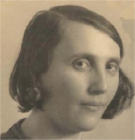
Martha Fortgang
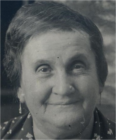
Anna Ausubel
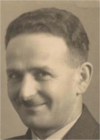
Yitzchak Fortgang
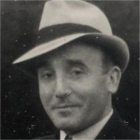
Shlomo Ausubel
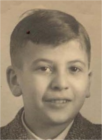
Hermann Fortgang
אודות הקהילה
STUTTGART:
The Jewish Community in Stuttgart
The Jewish presence in Stuttgart dates back to 1343. At that period, the existence of a Jewish synagogue and a Jewish street was already known. However the Jews disappeared in 1348 with their persecution and expulsion. Since then, until 1800 Jewish presence in Stuttgart was limited to just a few who had been protected by the local rulers as "court Jews" and tax collectors. Among the prominent Jewish families and bankers in Stuttgart, in the 18 century, was the Kaulla family.
At the beginning of the 19th century, the princes of Baden-Württemberg started providing the Jews with civil rights. This was a slow process since establishing new synagogues and nominating Jewish leaders for the community was not permitted, therefore, religious services were held in private apartments. The official recognition of the Jewish community by the local authorities was achieved only in 1832. The community at the time numbered 15 families a total of 124 persons. The first chief Rabbi for the community was nominated in 1834. The inner debate among the German Jews between the liberal protagonists of emancipation and assimilation and their orthodox antagonists didn't skip the Jews in Stuttgart.
In 1880, the orthodox Jews in Stuttgart gathered in an independent association. They convened for prayers in the basement of one of the houses. Absurdly, and as strange as it may appear, they managed to get an appropriate prayer space only after 1933.
Following pogroms and revolutions in Eastern Europe at the end of the 19th century and the beginning of the 20th century, many Jews from Russia, Poland and then Austro-Hungarian Galicia immigrated to Germany. Many of them would later on serve in the armed forces of Germany and Austria during the 1st W.W.
In addition to Jewish sport associations "Hakoach" and "Makkabi" and youth organizations such as "The young Hapoel Hamizrakhi", the "Ostjuden" in Stuttgart had their own charity associations such as "Bikur Holim"(established in 1919) and "Linat Hazedek" (also the name of their synagogue) headed by David Horowitz. My Grand Father Kalman Ausubel was among their prominent activists.
In 1933, when the Nazis seized power in Germany, 4,408 Jews were living in Stuttgart, 373 of whom possessed Polish citizenship.
Beginning in March 1933 and until the end of that year, 100 Jews emigrated from Germany, in total from the beginning of 1933, 174 emigrants, and 63 of whom- to Palestine/ Eretz-Israel.
In March 1934 a united organization of the Jewish schools was established in Stuttgart with the intention of building a Jewish school, adjacent to the house of the Jewish community. On April 17th, 1935 the Jewish school was opened also in order to prepare the students for the inevitable emigration from Germany.
In February-March 1936, Jews in Stuttgart were arrested by the Gestapo and beaten brutally for hours.
During 1937 Anti-Jewish demonstrations and gatherings took place in Stuttgart in which Nazis demanded to complete the removal of the Jews from German economy.
The expulsion of Jewish families of Polish origin from Württemberg at the end of 1938 was carried out by the local police. The Jews of Polish origin in Baden-Württemberg numbered 297 people. At the night of Oct. 27th they were arrested and transferred to the Stuttgart police H.Q. It was the first imposed evacuation in that town. The majority of the detainees didn't speak Polish at all. On Oct.28th, 41 Jews holding Polish citizenship including my family kins and David Hurwitz, the head of the "Ostjuden" community were loaded on sealed train wagons. They were transported to the Polish border, where the Polish authorities refused their entrance. Only a few days later, following the intervention of the Jewish organizations in Poland, some of the deportees were permitted entrance to Poland and a few managed to return to Stuttgart. 51 Jews of those expelled from Stuttgart in 1938, perished later on in various Nazi camps during the 2nd World War.
During the "Kristallnacht" (Nov.9th 1938) two central Jewish synagogues in Stuttgart were burnt down as well as the Jewish religious school. Shop windows owned by local Jews were smashed, however private apartments were unharmed.
The following day (Nov.10th) a mass arrest of Jews had started and lasted for an entire week. Some of the detainees were moved to concentration camps in Dachau and Woltzheim. The Nazis also ransacked the offices of the Jewish community in Stuttgart as well as the praying site of "Adat Yeshurun".
Following those events, the American Consul in Stuttgart reported to the American Ambassador in Berlin about an "invasion" of Jews of the consulate, asking for any kind of emigration document, out of fear of being arrested upon returning home without a proof for their intention to immigrate. The consul also reported about the destruction and setting fire to all schools and Jewish owned shops and about the arrest of almost all Jews aged 18-65. Nevertheless, at the beginning of 1939, the American consul in Stuttgart deliberately slowed down the approval of visas to the US even for Jewish applicants who possessed all the appropriate documents.
Although studies in the Jewish school in Stuttgart resumed in 1939, the number of students declined as a result of the emigration. The cultural life of the community was completely paralyzed following the dismantlement of all organizations and institutes that had been active.
From the beginning of Oct.1941, a mass deportation of Jews in Germany had started. The Jews living in Baden-Württemberg were expelled in several transports until Feb. 1945. Most of the elderly Jewish people were concentrated in specific locations. A few empty houses and palaces in Württemberg were designated as "Houses for Jews" during winter 1940/1941, one of them was in Tiegerfeld near Stuttgart. Jews were transported from there, to labor and concentration camps such as Izbica, Riga and Theresienstadt.
.
קרא עוד





